🌾 Field Notes: Lepironia Grass and the Flood Season in Phò Trạch
Rainy Season 2025 – From Phò Trạch Village, Maries – Lepironia Crafts of Huế 🌧️
“Is this grass really durable?”
“Won’t it get moldy when it gets wet?”
People often ask that.
And perhaps the truest answer isn’t found in any advertisement, but in the very place where the grass is woven – Phò Trạch Village, one of the lowest-lying lands in Huế, where every flood season tests the strength of its people.
🌧 Where the floods come as naturally as the rain
Huế is in flood season again.
Since last night, the rain has poured white over the sky.
This year, it’s not the gentle drizzle of other years, but heavy, hammering rain, beating on tin roofs, slapping the doorways, curling in with the cold wind.
In just one night, the Ô Lâu River overflowed its banks. Water spread across the fields, swallowing the roads.
And yet, amid the muddy current rushing through the yards, the people of Phò Trạch are still weaving Lepironia grass.
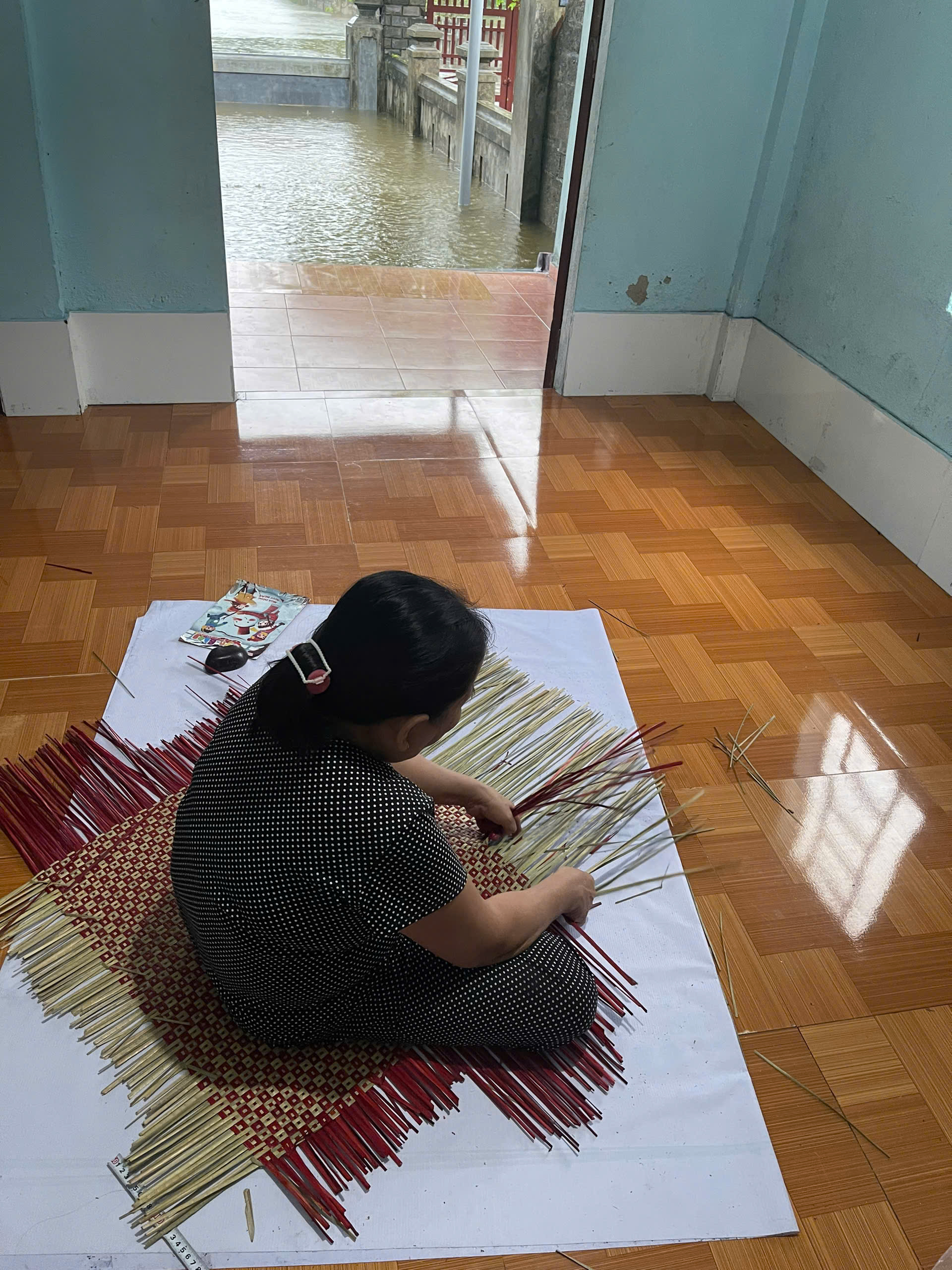
At noon, the water already reached the doorsteps.
The small house floor glistened wet, but in one corner of the porch, a woman sat bent over – her hands carefully weaving each strand of Lepironia.
Outside, the rain slashed across the yard; inside, the soft rustle of dry grass mingled with the rain’s rhythm – the sound of ordinary life in the craft village, ordinary even in the middle of a flood.
🌿 Lepironia is strong – because its makers are stronger
Lepironia grass is born to live with water.
It can stand the floods, the heat, the mud – and still rise upright, green and alive.
Perhaps that’s why the people of Phò Trạch love it so much – and in time, have become like it.
Each blade is harvested, dried for strength, beaten flat for softness – then turned into a hat, a bag, a tiny charm.
When we speak of “durability,” Lepironia is more than just a material.
It carries within it the resilience of the hands that weave it – hands that endure the sun, the water, the long seasons of unending rain.
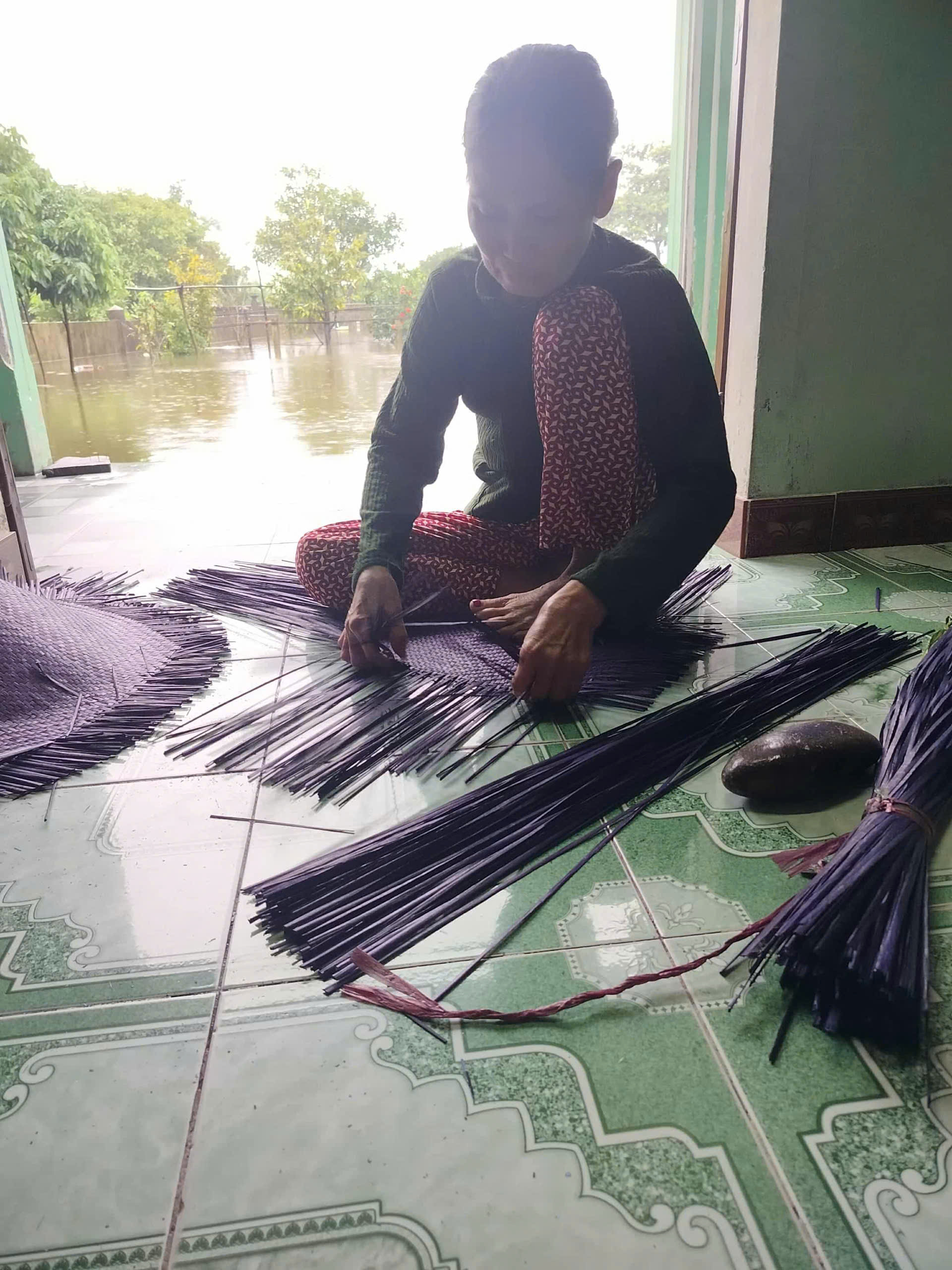 |
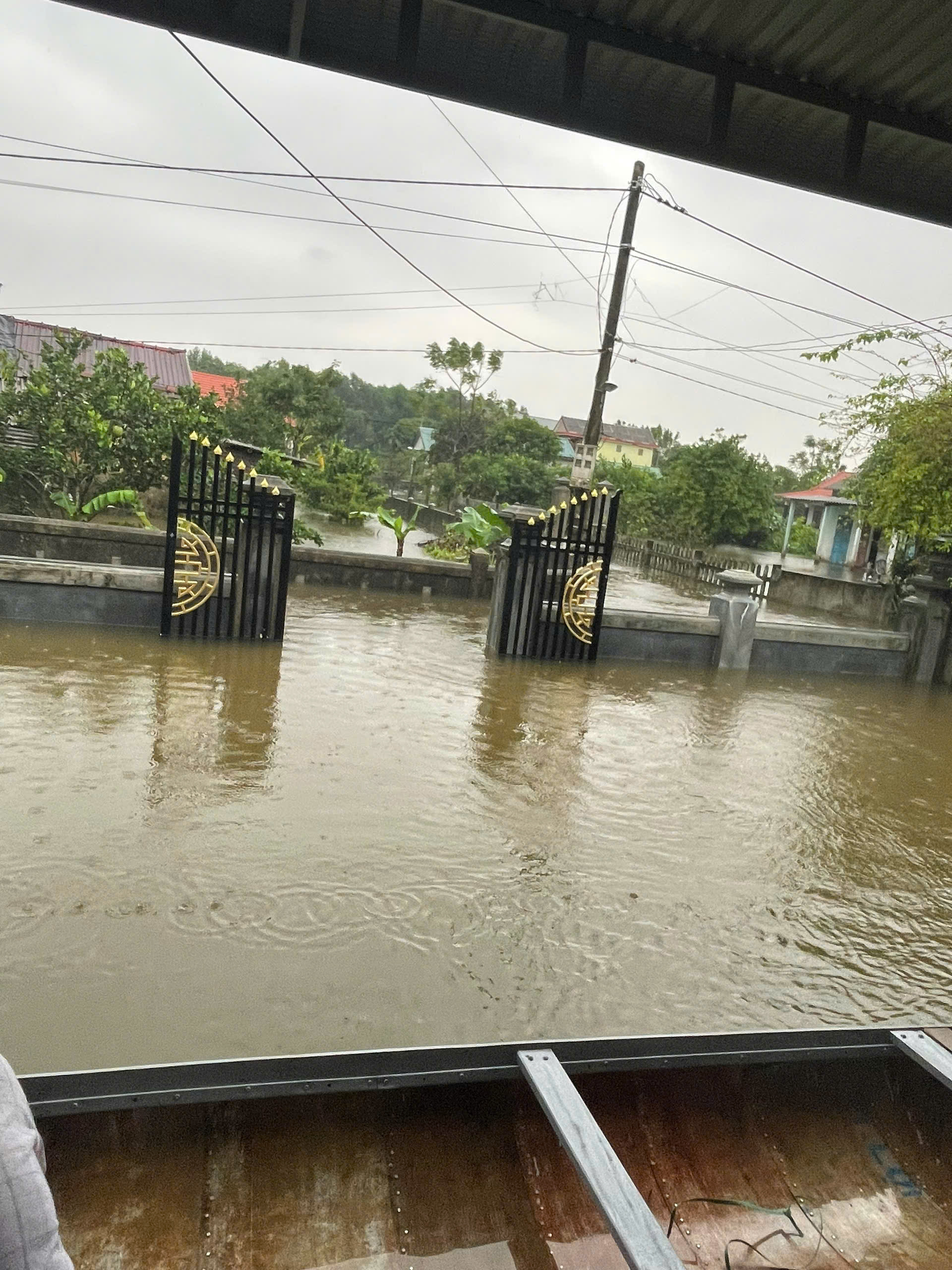 |
Working hand in hand with Maries, the women of Phò Trạch balance many roles – mothers, wives, grandmothers – and still find a way to earn a living from their traditional weaving craft.
Each has a small corner in her home where she weaves.
When the work is done, she ties up the bundles carefully and brings them to be sent off to Maries.
On dry days, those nearby walk; others cycle with goods strapped behind.
But in flood season, the only way is by boat.
Tiny boats glide through the flooded alleys, bundles neatly stacked at the bow, covered with an old raincoat. Rain splashes their faces – and still, they smile.
That slow, steady paddling; that bright look in dim weather – one can tell: to them, this craft is not a job, but a breath of life.
No matter how heavy the rain, how deep the water, those hands never stop weaving.
There is nothing “ordinary” about it – only perseverance, quiet pride, and faith that the water will recede, and the craft will remain.
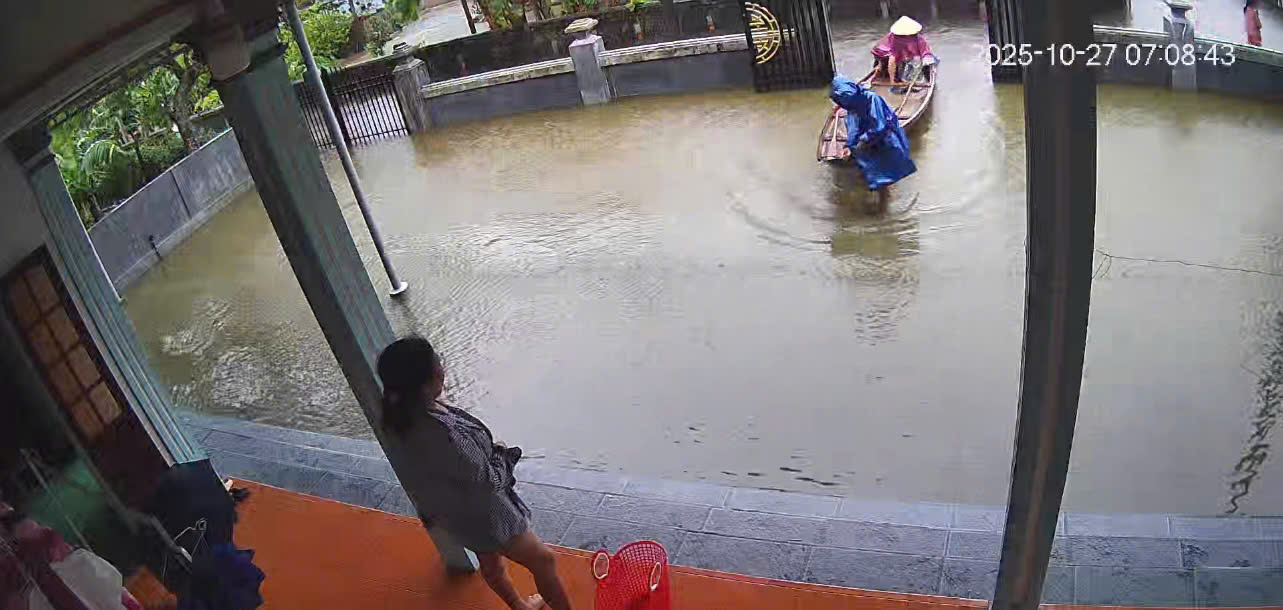
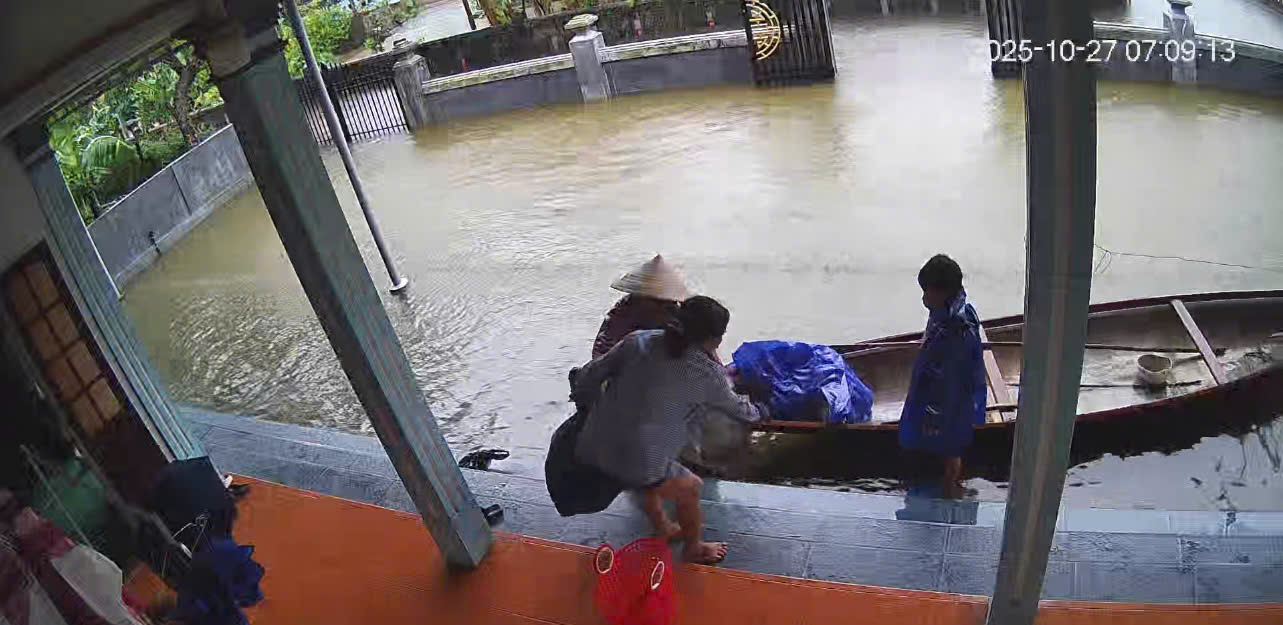
Each flood season, Maries feels a deeper affection for this village.
For the silver-haired artisans, their wrinkled hands still swift and sure.
For the flicker of oil lamps drying bundles of grass.
For the curved backs, patient under the endless rain.
To them, keeping the craft is keeping faith.
To Maries, preserving the craft is preserving the soul of Huế – a fragment of its quiet beauty and memory.
This season, as the water rises again, we see the same faces: gentle yet unyielding.
Each bag, each hat that travels far carries with it the scent of Huế rain, the hands of Phò Trạch artisans, and the quiet pride of those who weave hope through every flood.
And yes – Lepironia grass remains strong, remains beautiful, and continues to hold the soul of Huế through every flood season.
Maries – By Viet Artisans
📍 Phò Trạch Lepironia Craft Village – Đông Mỹ Quarter – Phong Dinh Ward – Huế City, Vietnam
🌐 madebymaries.com
